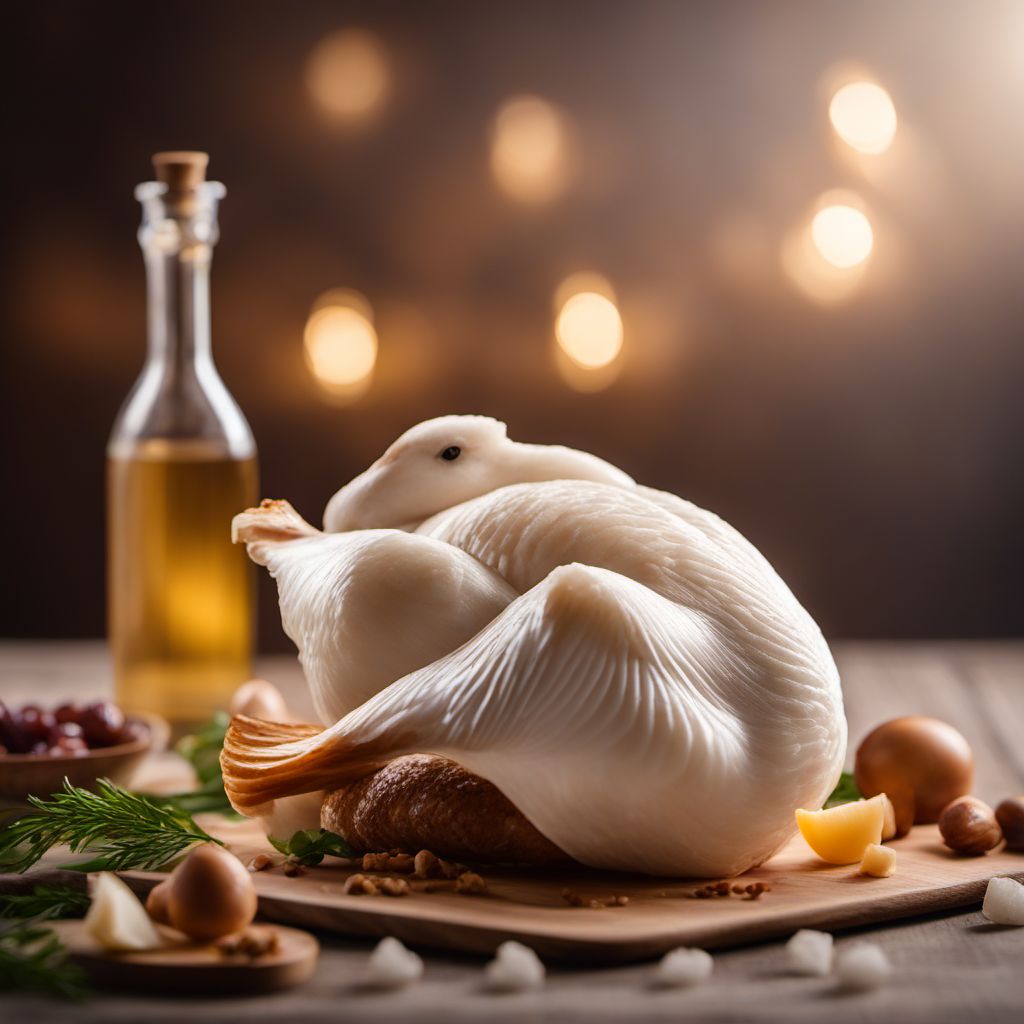
Ingredient
Goose, fresh fat tissue
The Buttery Delight
Fresh goose fat has a creamy white color and a smooth, buttery texture. It is derived from the fatty tissue of geese and is highly prized for its culinary applications. When cooked, it melts easily and coats ingredients, enhancing their flavors and providing a luscious mouthfeel.
Origins and history
Goose fat has been used in cooking for centuries, particularly in European cuisines. It has a long history in French cuisine, where it is known as graisse d'oie" and is used in traditional dishes like confit and pommes de terre sarladaises. Goose fat is also popular in British and Eastern European cuisines. It was traditionally used for roasting potatoes and is still a staple in many households during the holiday season."
Nutritional information
Goose fat is primarily composed of monounsaturated and saturated fats. It is a good source of vitamin E and contains small amounts of vitamin K. It is high in calories, with approximately 120 calories per tablespoon. However, it is free of carbohydrates and protein.
Allergens
There are no known allergens associated with fresh goose fat.
How to select
When selecting fresh goose fat, look for a creamy white color and a firm texture. Avoid any fat that has a yellowish tint or a rancid smell. It is best to purchase goose fat from reputable sources, such as specialty stores or farmers markets, to ensure its quality and freshness.
Storage recommendations
To store fresh goose fat, it should be kept in an airtight container and refrigerated. It can be stored for several months in the refrigerator or frozen for longer-term storage. It is important to keep the fat away from strong-smelling foods, as it can absorb odors easily.
How to produce
Producing fresh goose fat requires raising geese and extracting the fat from their fatty tissue. It is a specialized process that is typically done by professional producers or farmers. However, it is possible for individuals to render goose fat at home by slowly melting the fat tissue and straining it to remove impurities.
Preparation tips
Fresh goose fat can be used in a variety of cooking techniques, including frying, roasting, and sautéing. It is particularly well-suited for roasting potatoes, as it helps achieve a crispy exterior and a fluffy interior. It can also be used to cook meats, vegetables, and even pastries, adding a rich flavor and moist texture to the final dish.
Culinary uses
Fresh goose fat is commonly used in European cuisines, particularly in dishes like confit, roast potatoes, and sautéed vegetables. It is also used in traditional Eastern European recipes such as pierogies and cabbage rolls. In recent years, it has gained popularity in modern cooking for its unique flavor and versatility.
Availability
Fresh goose fat is commonly available in regions where geese are raised for culinary purposes, such as Europe and North America.

